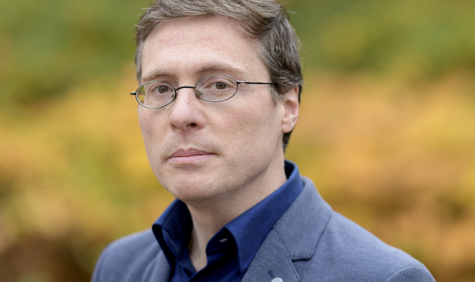Ten years of collaboration on research software
Without software, academic research in almost every discipline is impossible. But not all research institutes have the expertise on-premises to develop specific research software. That is why NWO and SURF set up the Netherlands eScience Center ten years ago. Raúl Zurita Milla (University of Twente) pioneered big data thanks to the Centre.
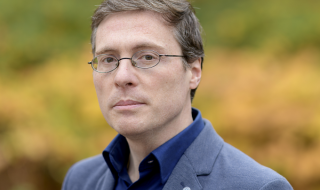
"As autumn approaches, plants lose their leaves. In spring, we see them bloom again. Studying these cyclical biological events is called phenology. The timing of these phenomena varies from place to place and year to year, depending on environmental factors," explains Raúl Zurita Milla, professor of spatio-temporal analysis at the University of Twente.
"I study changes in what we call the 'green wave': the transition from winter, when everything sleeps, to spring, when everything comes back to life. We make maps showing this green wave from south to north. In the Netherlands, spring comes later than in southern Spain, where I come from, and in Norway it comes even later."
"We can predict the likelihood of tick bites and pollen"
Green wave models are based on phenological observations made by volunteers, says Zurita Milla. "You take your children to school, and you notice: hey, this tree had no leaves last week and today it does. You can report this to a phenological network. These networks help collect millions of observations."
Disaster
Zurita Milla and his team combine this information with environmental data such as temperature and day length to chart the arrival of spring. "By seeing how the green wave changes over time, we gain insight into the effect of climate change. It also has a practical, agricultural application: farmers may need to plant at different times or use different varieties. And you can imagine that it would be a disaster if the timing of flowering and pollinating insects did not match, or the arrival of spring and the last frost. There are also health aspects. Ticks have a phenology, and people go out into nature in certain seasons. So phenological studies can help predict when tick bites are more likely. Currently, we are also working on modelling pollen. So that patients with hay fever can take their medication in time or avoid areas with high pollen."
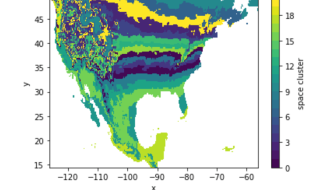
Green wave across North America
Wanting to do large-scale phenological research for all of Europe and the Americas, Zurita Milla approached the eScience Centre a few years ago. "It involved a lot of data. Moreover, our models were relatively slow and we wanted to speed them up by running them on distributed systems."
Learning from each other
The technology the researcher works with has changed enormously over time. "When I was a student we had a desktop application, we were told which buttons to press and all the data was analysed locally. During my PhD time, I started programming to automate my data analysis. Now I have to switch to big data programming frameworks, because the data simply does not fit in my computer. Researchers should no longer download data, but move their code to the cloud, where all the data is available. Thanks to the collaboration with the eScience Centre, I was a bit of a pioneer in my faculty with this way of working. Just before the covid-19 pandemic, we started our own big data centre because we realised we needed to invest in these technologies and tools."
Ready-made tools for Earth observation
Zurita Milla, the eScience Centre and SURF worked together for several years in a so-called alliance project, with all parties learning from each other. "They wanted to know more about geospatial data, and we wanted to learn about big data solutions. We discussed the algorithms off and on with research software engineers from the eScience Centre, and SURF provided the computational infrastructure." With the insights from this project and similar ones, the eScience Center and SURF have now developed ready-to-use tools, infrastructure and storage for Earth observation data. "For the geospatial research community, this has lowered the barrier of entry to big data," he said.
Founded to make itself redundant
"A centre of excellence for research software as a national organisation is unique in the world. This is looked at jealously by others," says Joris van Eijnatten, director of the Netherlands eScience Centre since 2020. The Centre employs PhD scientists with digital expertise, who help researchers develop research software.
Once the eScience Center started with about 10 people, now there are 100. The organisation therefore recently moved to larger premises at the Amsterdam Science Park. With SURF, the Centre mainly cooperates around the use of SURF's computing and data infrastructure. "We also give joint training courses and exchange ideas with each other in the field of innovation and open science," says Van Eijnatten.
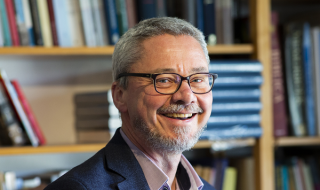
Digital skills
"Besides the collaborative projects we do with institutions, we want to expand our training offer in the coming years. Think deep learning, parallel programming and online collaboration. So that this expertise also lands within institutions and among researchers." At its inception, the eScience Centre was already intended to be a temporary body. "We don't have a deadline, but it is conceivable that our mission will be accomplished at some point."
In the early days, the type of researcher knocking on the Centre's door was mainly the beta, who was already convinced of the usefulness of digital research methods and could code for themselves. "Nowadays, the emphasis is shifting towards the social sciences and humanities. That's a very different target group. It means we have to work at different levels and make our language more approachable. We do offer a certain advanced level; we don't teach programming courses. But universities do that now."
Exploring new technologies
"Research institutions are now investing more in digital knowledge, for example by appointing data stewards. The next step is for them to start investing in research software engineers. It is a process; we are far from there. Young researchers have more digital skills, but computer science should actually be part of every university study. At the same time, technology is constantly changing. Universities themselves cannot keep up with all that. We research new things, such as artificial intelligence, machine learning, quantum technology and digital twins. So for now, there is plenty for us to do."
For more information about the eScience Centre, visit www.esciencecenter.nl.
More collaborative projects by SURF and the Netherlands eScience Centre:
New technology strengthens legal research
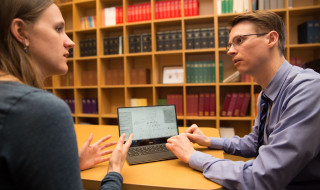
Professor of Private Law Gijs van Dijck developed a technology for searching, analysing and visualising court decisions. This allows legal scholars to quickly analyse a large number of cases. He did this together with the Netherlands eScience Center and SURF. The technology and source code are available.
Googling the cancer genome
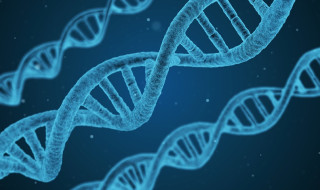
Thanks to new technologies, genome sequencing is now a standard part of cancer diagnostics. It enables treatment tailored to individual patients. Despite the massive production of genomic data, the systematic and comprehensive analysis of this data lags behind due to computational and algorithmic limitations. We are therefore working on new analytical and computational models.
Read also
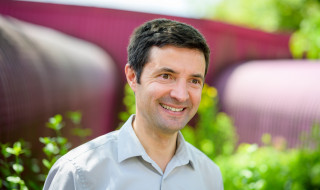
The SURF Story about Serkan Girgin from the Centre of Expertise in Big Geodata Science at the University of Twente: Pioneer in Earth Observation
Text: Josje Spinhoven
